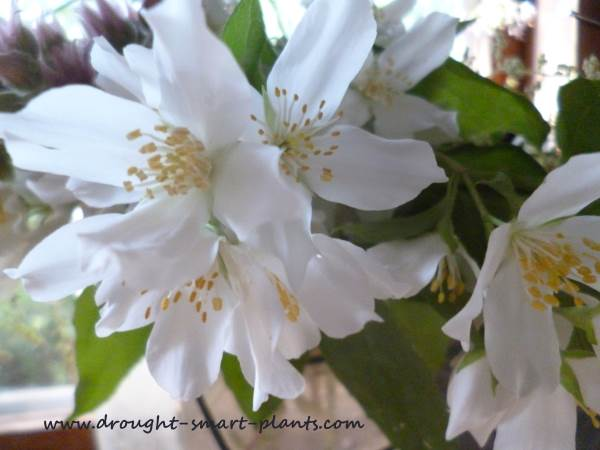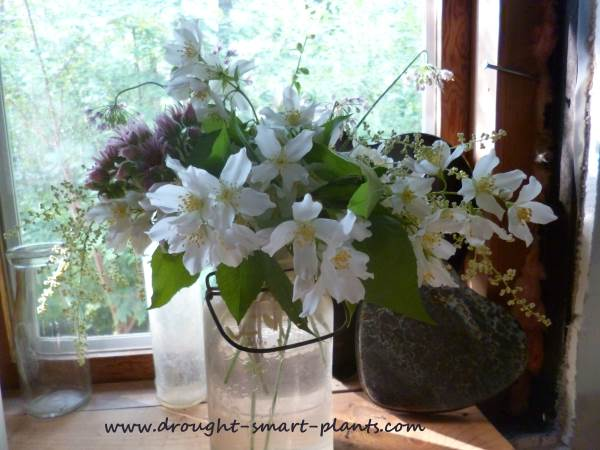Use whatever is blooming in your garden
Wildflowers combined with other more tame versions of your garden flowers can make an incredible flower arrangement.
How romantic and old fashioned, to wander around your garden with a basket and a big hat (of course) to collect only those flowers that are at their peak of bloom and freshness to display in your home.

Native trees, shrubs and flowers can be so beautiful, but sometimes not quite enough are blooming that you feel you can take any of them. Bulk up your choices with garden plants that are flowering a the same time.
Here are some of the plants in my garden in mid July that I can choose for their beauty, and also for their sentimental value;

Allium cernuum, the nodding onion is a wildflower that grows in many dry and inhospitable areas, such as the Chilcotin.
These are grown from seeds that my Mum collected for me around her home, and so they have special meaning for me.
I was so happy that I got good germination from this batch.

Holodiscus is known commonly as Ocean Spray – the flower buds stay a long time before opening, and I think this is their best feature.
The flowers look like fuzzy and messy drooping clusters, but the buds are exquisite, and remind me of vintage bead work.

This plant, Philadelphus lewissii was discovered by (and named after) the explorers Lewis and Clark on their excursions into the wilds of North America, and quite quickly became a favorite garden plant, especially the double flowered versions.
I have to admit I prefer the native type which is most commonly found in single form. The fragrance is unforgettable, and sometimes overwhelming, and you can see why the common name is Mock Orange. It’s often used for bridal flowers.

Campanula is often grown in cottage gardens, and most often it’s blue or mauve; this unusual white flowered version has a slightly green tinge to the flowers.

Sedum flowers are incredibly intricate in magnification; these are Sedum album athoun, a variety that seems to be completely happy and at its best in July.

These Sempervivum flowers are bittersweet; as the plant produces the thick flower stalk, it uses up all its energy and dies after the flowers fade. I don’t feel at all guilty about taking some to display inside in a flower arrangement in this mostly white grouping.











